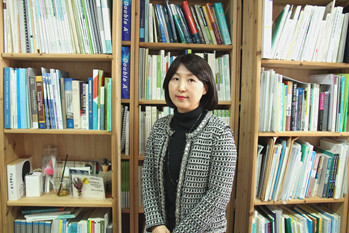
Recently, the school #MeToo movement disclosed national volleyball athletes and twin sisters Lee Jae-yeong and Lee Da-yeong’s past of being engaged in notorious school bullying. This movement quickly spread to the entertainment business and to the shock of many, multiple K-Pop idols and actors have also been accused of inflicting school violence.
According to the Ministry of Education, school violence has been increasing for three consecutive years in South Korea with around 60,000 victims reported annually. The form of bullying is also taking a drastic turn as the internet is now widely accessible to virtually everyone. Yet, despite the rising cases of cyberbullying, the lack of standardized tools to detect or measure cyberbullying has been preventing victims from reporting the abuse.
Professor Chun Jong-serl from the Department of Social Welfare, however, recently published a report on developing standardized tools to measure cyberbullying. This report has been published in “Computers in Human Behavior,” a renowned scholarly journal examining computers from a psychological perspective, and gained international recognition. Ewha Voice sat down with Dr. Chun to hear her journey in publishing the report.
Cyberbullying is defined as “a repeated, deliberate act of intimidation, harassment, and shame through electronic media or devices.” It mainly occurs between acquaintances or peers.
“What makes cyberbullying even more pernicious to victims than any other forms of bullying is that it can occur virtually everywhere regardless of time and space,” Dr. Chun said. “There is no safe zone once you become the target. You’re not safe even when you’re at your own home.”
To make matters worse, due to the pandemic situation, students are spending more time online than ever, which means there is a higher chance for students in this generation to experience cyberbullying. To solve this, Dr. Chun emphasized the need to develop clear protocols to make reporting cyberbullying easier and revise relevant school laws so appropriate disciplinary action and punishment against perpetrators can be imposed.
Dr. Chun also emphasized that a “whole school approach” is necessary to eradicate cyberbullying in school. This approach promotes integrated education on students, school staff, teachers, as well as the community to improve student behavior and school environment in general and has beenfound to be very effective in addressing cyberbullying.
“The students’ parents or teachers are most likely to have never experienced cyberbullying at school before,” Dr. Chun said. “Also, the forms of cyberbullying are evolving day by day, making it more difficult to identify and prevent such abuse.”
Dr. Chun’s words speak the truth. In real life, cyberbullying is taking many forms and examples include; teakka: inviting the victim to a group chat and verbally abusing together, Kakao-jail: keep inviting the victim to different chat rooms, Bang-pok: Exiting the group chat simultaneously leaving the victim alone, Kakao-ghosting: intentionally ignores one person in a group chat, and Wi-fi shuttle: forcing the victim to get unlimited data so the abusers can get free Wi-Fi.
“It is necessary to provide cyberbullying education to parents and teachers and for the school to invite experts to intervene when necessary because this is a new type of abuse to everyone,” Dr. Chun said.
Lastly, Professor Chun said that she wants to further establish a cyberbullying prediction model through analysis of Big Data.
“As the scope of cyberbullying continues to expand and evolve, my team is planning to collect and categorize unstructured text data on cyberbullying from online communities and social media to create an ontology that establishes the concept of cyberbullying and further study the prediction model of cyberbullying.”

